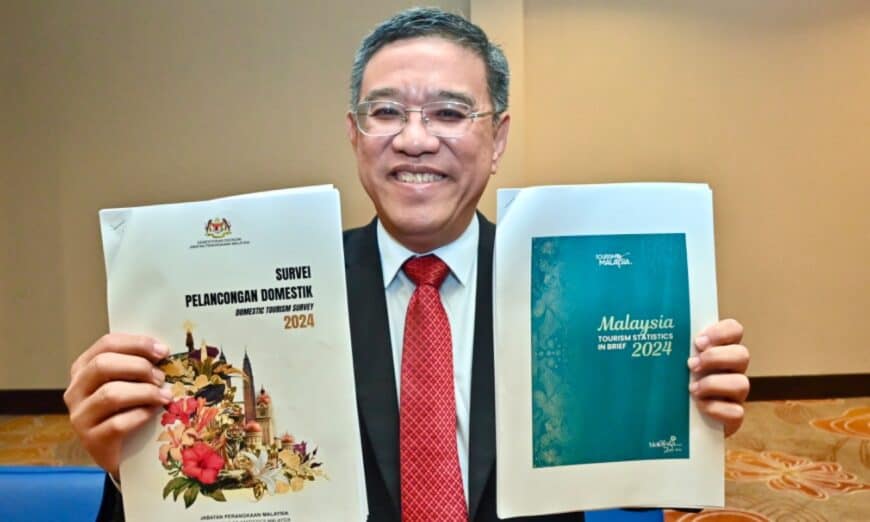STATE Tourism and Creative Economy Committee chairman Wong Hon Wai has responded to a recent domestic tourism survey by the Department of Statistics Malaysia (DOSM), stating that actual hotel data shows Penang received more local tourists than Perak in 2024.
He clarified that the “Domestic Tourism Survey 2024”, conducted by DOSM under the Ministry of Economy, is based on sampling and does not reflect actual hotel stay records.
“It is important to understand that the DOSM survey is a sample-based study, not a record of actual hotel stays,” Wong said in a statement today, addressing concerns raised by Penang MUDA chairman Andika Putera.
“The findings are derived from sampling models and questionnaire feedback.
“While this is a common research practice, its accuracy depends heavily on the size and representativeness of the sample,” he added.
According to the survey, 2,819 Enumeration Blocks were selected nationwide across 13 states and three Federal Territories.
Of these, only 204 blocks were from Penang, a figure Wong deemed too small to accurately reflect the state’s tourism performance.
“Although the methodology can provide an early snapshot, drawing broad conclusions from such a limited sample risks misrepresentation.
“The small sample size simply does not reflect the true strength of Penang’s tourism sector,” he added.
Wong pointed to Tourism Malaysia’s official hotel statistics as a more accurate indicator.
In 2024, Penang hotels recorded 5,236,584 domestic tourists and 3,000,488 international tourists, bringing the total to 8,237,072 tourists.
By contrast, Wong said, Perak, which ranked first in the DOSM report, logged only 4,186,503 domestic hotel guests.
Wong also questioned the appropriateness of the survey’s respondent pool.
“The DOSM itself stated that the survey was conducted on household samples in each state and not actual tourists.
“Respondents were asked to recall trips taken over the past year. This makes the findings retrospective and highly subjective,” he said.
He further pointed out that the survey was not carried out at airports, hotels, or tourist hotspots, but through household interviews, which may not be suitable for high-impact destinations like Penang.
“This approach poses a significant risk of underestimating actual visitor numbers in states like Penang,” Wong said.
He added that DOSM’s definition of domestic tourists includes both overnight visitors (“tourists”) and day-trippers (“excursionists”).
“The figures likely include many people travelling back to their hometowns during festive seasons such as Hari Raya.
“Even though these are interstate journeys, the intention is not tourism but visiting family, and they are returnees, not tourists in the true sense,” Wong further explained.
According to the DOSM survey, day-trippers made up 66.8% of all domestic visitors.
“These visitors typically do not stay overnight, spend minimally, and are hard to capture through systematic tourism channels.
“While their numbers may be high, their direct economic impact is limited. As a result, states with high-quality tourism offerings like Penang may be underrepresented in such data,” Wong stated.
Earlier, he also stressed that while DOSM’s survey may provide preliminary insights into travel trends, it comes with methodological limitations and does not accurately measure tourism performance in key destinations.
Story by Kevin Vimal
Pix by Law Suun Ting

